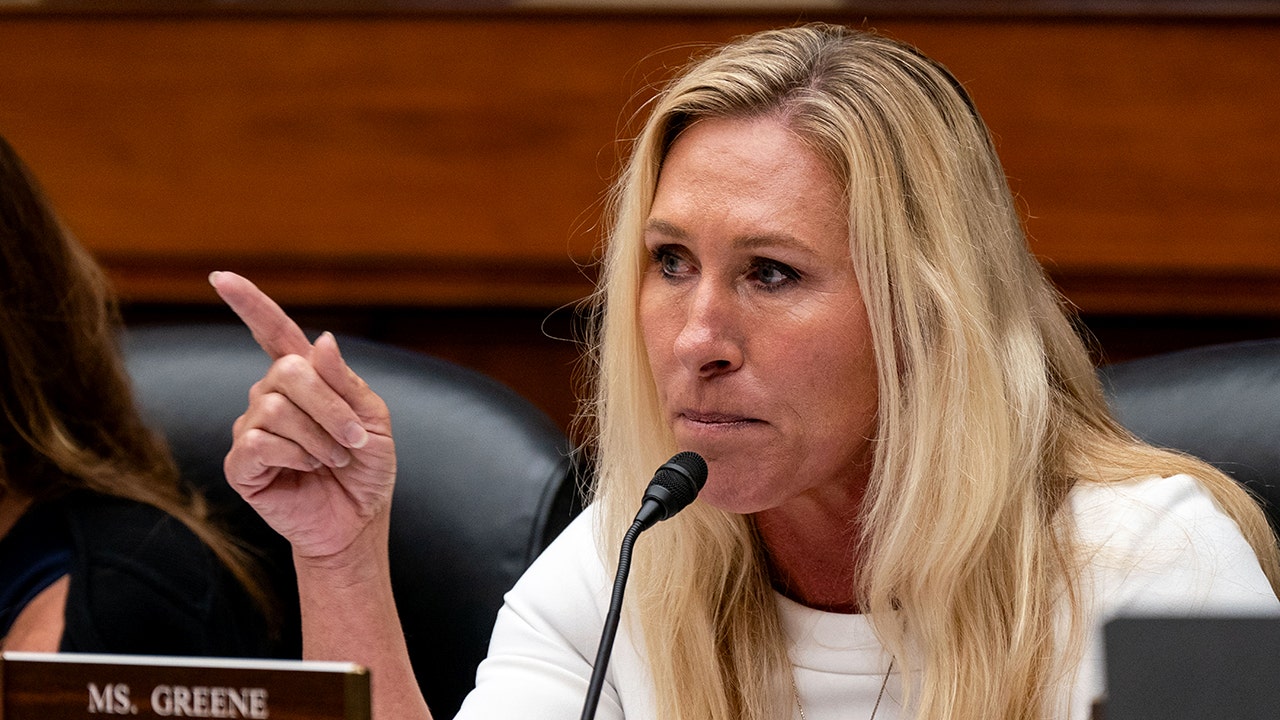Southeast
Florida Supreme Court backs Ron DeSantis on removal of Soros-backed prosecutor
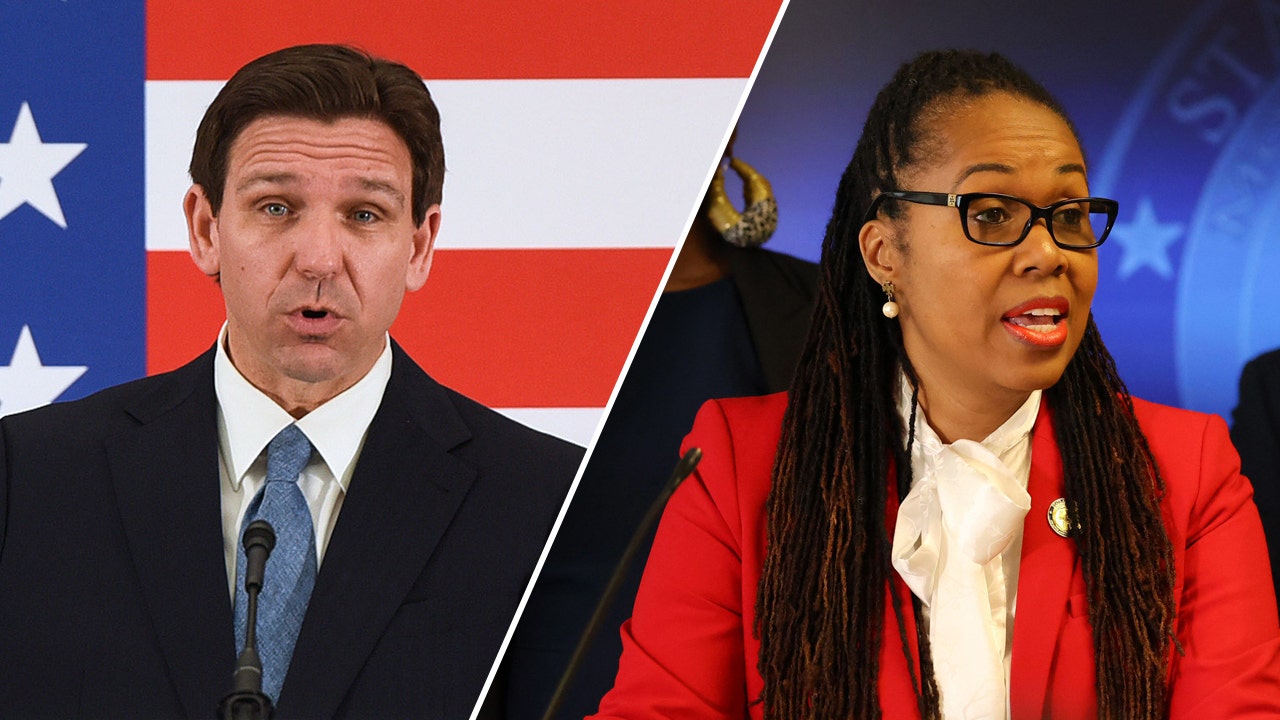
The Florida Supreme Court ruled in favor of Florida Gov. Ron DeSantis’ decision to remove a Soros-backed prosecutor on Thursday.
DeSantis had suspended State Attorney Monique Worrel in August 2023, accusing her of “dereliction of duty” when it comes to crime. Worrel sued for reinstatement, arguing her removal was an “arbitrary, unsubstantiated exercise of the suspension power.” Thursday’s 6-1 ruling shut down her plans.
“We cannot agree with Worrel that the allegations in the Executive Order are impermissibly vague, nor that they address conduct that falls within the lawful exercise of prosecutorial discretion,” the opinion read.
“We have said that a suspension order does not infringe on a state attorney’s lawful exercise of prosecutorial discretion where it alleges that such discretion is, in fact, not being exercised in individual cases but, rather, that generalized policies have resulted in categorical enforcement practices,” the majority opinion reads.
FLORIDA EDUCATION COMMISSIONER SAYS STATES NEED TO BE MORE ‘AGGRESSIVE’ WITH POLICY, GO BACK TO BASICS
The Florida Supreme Court ruled in favor of Florida Gov. Ron DeSantis’ decision to remove a Soros-backed state attorney. (Scott Olson/Getty Images)
DeSantis touted Worrel’s removal in a press conference last year as he was running for president.
RON DESANTIS SHAKES UP LIBERAL UNIVERSITY, APPOINTS SIX MEMBERS TO THE NEW COLLEGE OF FLORIDA
“The practices and policies of her office have allowed murderers, other violent offenders, and dangerous drug traffickers to receive extremely reduced sentences and escape the full consequences of their criminal conduct. In some cases, these offenders have evaded incarceration altogether,” DeSantis said at the time.
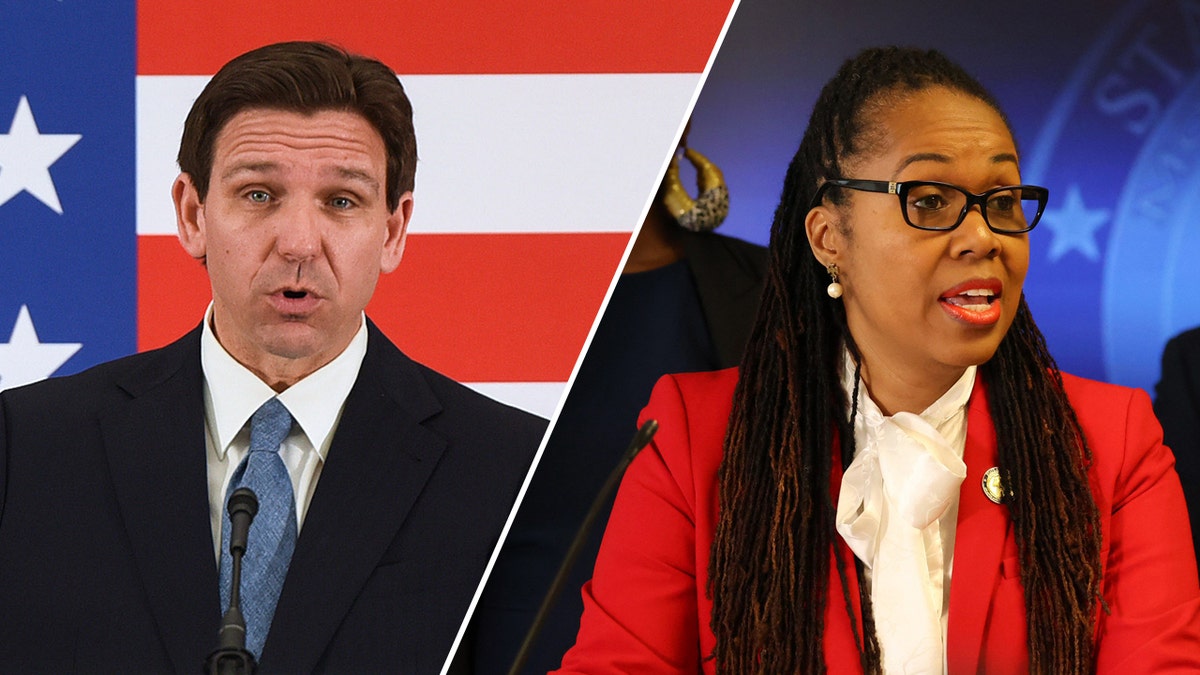
DeSantis accused Worrel of dereliction of duty, pointing to her refusal to impose mandatory minimums and other consequences for criminals. (Getty Images)
“State Attorney Worrel’s practices undermine Florida law and endanger the safety, security, and welfare of the communities that Ms. Worrell was elected to serve,” he added.
Worrel had enjoyed support during her 2020 campaign from Our Vote Our Voice, an organization that received $1 million from the George Soros-backed group Democracy Now, the Orlando Sentinel reported. Our Vote Our Voice spent $1.5 million in support of Worrel, according to the Sentinel.
Worrel was the second Florida prosecutor to face DeSantis’ wrath. He also suspended Hillsborough County State Attorney Andrew Warren in August 2022 for refusing to enforce the state’s abortion ban. That decision was upheld in federal court.
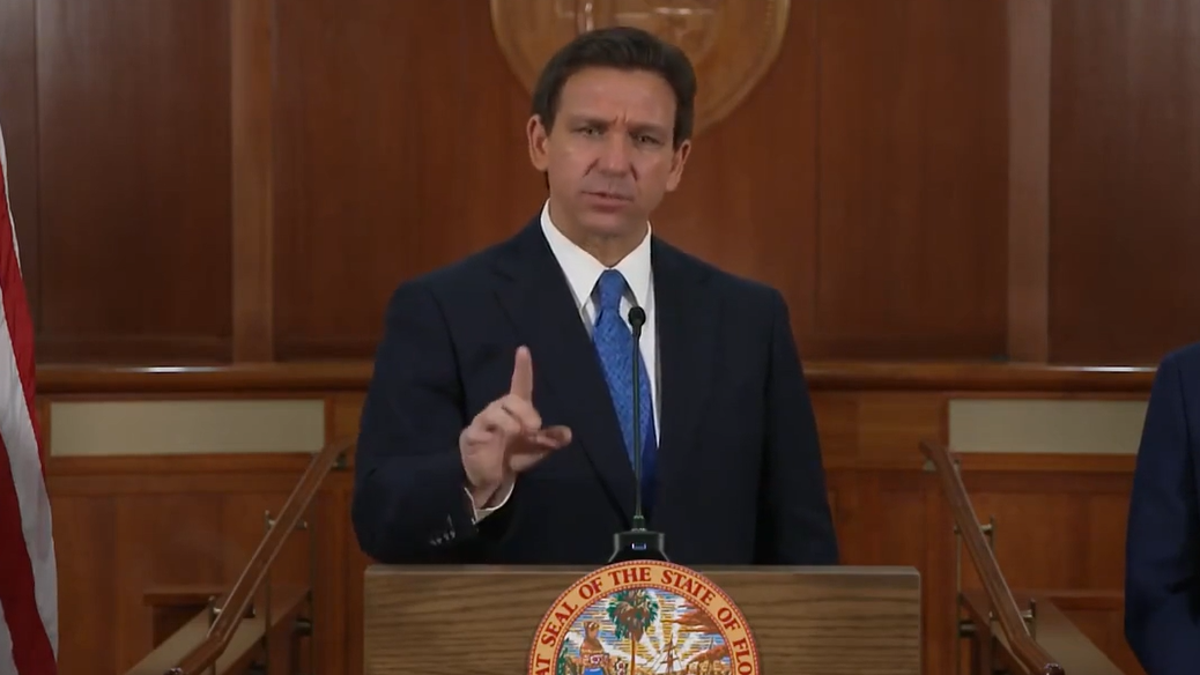
DeSantis has so far suspended two Soros-backed prosecutors in Florida.
CLICK TO GET THE FOX NEWS APP
Thursday’s ruling comes weeks after a federal judge blocked part of DeSantis’ illegal immigration bill from taking effect. The law, which DeSantis signed in 2023, in part amends human smuggling statutes to make it a felony to bring individuals without lawful immigration status into Florida.
U.S. District Judge Roy Altman issued a temporary injunction against that provision and in his decision cited testimony from plaintiffs that they were “now too afraid to travel in and out of Florida with their undocumented friends or family members – for fear of being arrested or prosecuted or of having their family members deported.”
Read the full article from Here

Southeast
Florida driver hits student with her truck, covers license plate before fleeing, deputies say
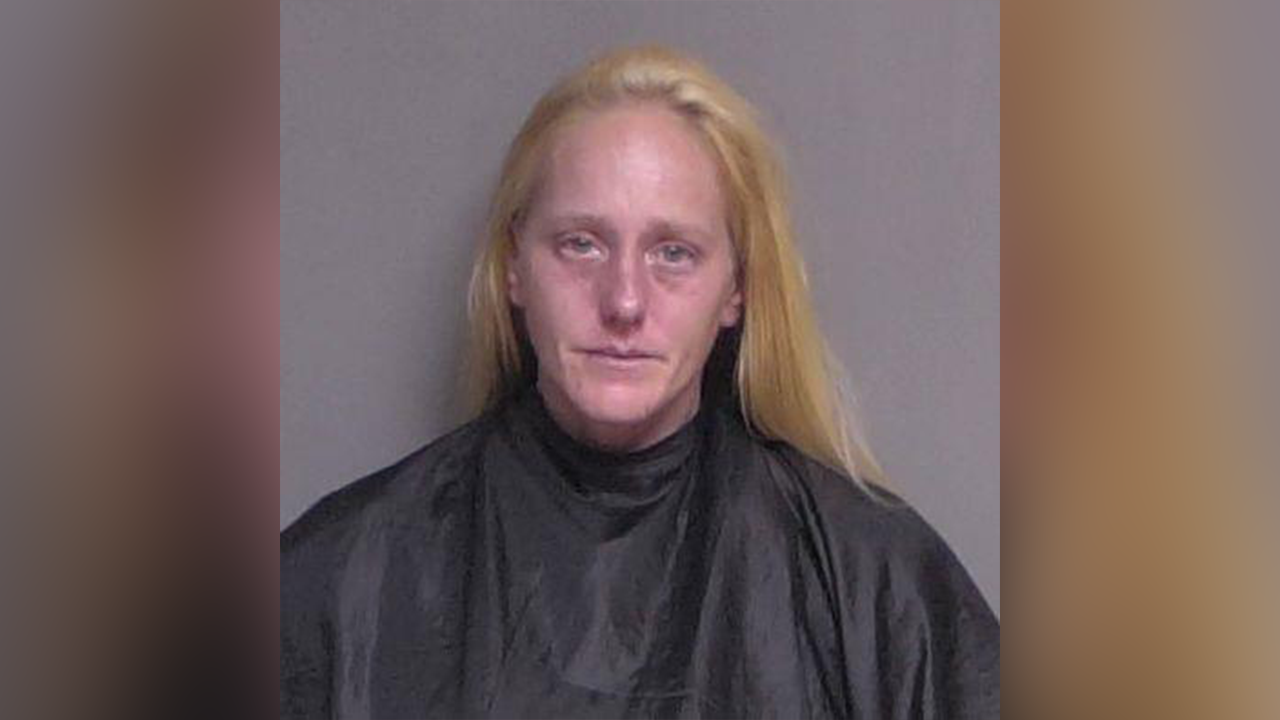
A Florida woman was arrested after she allegedly struck a teenager who was crossing the road with her truck, covered her license plate and sped off.
Sarah Wright, 37, was arrested Thursday and charged with leaving the scene of a crash with injuries and driving with a suspended license.
The crash happened shortly before 4 p.m. at the intersection of Gage Avenue and Noah Street in Deltona, Florida, according to the Volusia County Sheriff’s Office.
The victim, a 16-year-old boy, was riding his scooter home from Pine Ridge High School when he was struck by a black Chevrolet Silverado as he was using the crosswalk, the sheriff’s office said.
FLORIDA MAN BERATED, PHYSICALLY ABUSED CHILD FOR NEARLY 30 MINUTES OVER MISSING COUCH CUSHION: DEPUTIES
Sarah Wright, 37, is facing charges of leaving the scene of a crash with injuries and driving with a suspended license. (Flagler County Jail)
The teenager fell to the ground, resulting in a serious laceration to the back of his head as well as an arm injury, but he remained alert and conscious after the incident.
A witness reported that she was checking her mailbox nearby when she heard the crash. She told investigators that the suspect, later identified as Wright, exited her truck after the crash and checked on the boy before she went back to her vehicle and covered her license plate with paper and tape.
But the witness still managed to see the first character of her tag. A neighborhood Ring camera also captured the truck fleeing the scene.

A witness managed to see the first character on the truck’s tag and a neighborhood Ring camera captured the vehicle fleeing the scene. (Volusia County Sheriff’s Office)
The victim and the witness were also able to provide a detailed description of the suspect.
Officials were then able to locate a suspect vehicle captured on a nearby License Plate Reader camera within minutes.
Wright was found in Flagler County and taken into custody with assistance from Florida Highway Patrol and the Flagler County Sheriff’s Office.
FLORIDA SHERIFF MOURNS ‘REALLY GREAT’ DEPUTY KILLED DURING TRAFFIC STOP; SUSPECT LATER KILLED

Sarah Wright was booked into the Flagler County Jail on a $3,500 bond. (iStock)
She was booked into the Flagler County Jail on a $3,500 bond.
The teenage victim required staples for the laceration and treatment for his arm injury, but he is expected to make a full recovery.
Read the full article from Here
Southeast
Drone mishap during Orlando holiday aerial show sends child to hospital

A child was hospitalized on Saturday after being hit by a drone that was part of an Orlando, Florida holiday drone show.
According to the Orlando Fire Department, a 7-year-old boy was transported to the hospital because of injuries sustained from the falling drones, FOX 35 in Orlando reported.
In a video posted online by X user MosquitoCoFl, hundreds of drones being used as part of an aerial light show appeared to be flying into position before several started falling from the sky before slamming to the ground.
A man could be heard saying to children nearby, “Oh no! I don’t believe they’re supposed to be falling.”
MYSTERY DRONES COULD BE IDENTIFIED FASTER USING NEW DETECTION TOOL, BUT FAA LACKS RESOURCES
Several drones malfunctioned during a drone show in Orlando, Florida on Saturday, sending the unmanned aerial objects crashing to the ground. (Credit – X/MosquitoCoFL)
Geese also appear on the water, flapping their wings to try and get out of the way of the chaotic scene.
City officials told the station the holiday drone show was permitted by the FAA.
Still, after one drone show went wrong, the city chose to cancel the second that night at 8 p.m. due to “technical difficulties.”
DRONES SPOTTED ACROSS NORTHEAST LIKELY COMING FROM ‘INSIDE THE US,’ MILITARY EXPERT SAYS

Several drones malfunctioned during a drone show in Orlando, Florida on Saturday, sending the unmanned aerial objects crashing to the ground. (Credit – X/MosquitoCoFL)
The FAA told Fox News Digital it will investigate the cause of the drone show malfunction.
“Several small drones collided and fell into a crowd during a holiday drone show over [Eola] Lake in Orlando, Florida,” the FAA said. “The incident occurred around 6:45 p.m. local time on Saturday, December 21.”
According to the agency, drone arrays and light shows are subject to FAA regulations and typically require a waiver to a regulation that prohibits operating more than one drone at a time.
For each drone show application, the FAA looks at things like the software controlling the drones, procedures for setting up safe and restricted areas to keep people a safe distance from the show, procedures if drones fail, and procedures for when an aircraft gets too close to the show.
DRONE MYSTERY: NEW JERSEY HOMEOWNERS THREATEN TO TAKE MATTERS INTO THEIR OWN HANDS IF GOVERNMENT DOESN’T ACT

Several drones malfunctioned during a drone show in Orlando, Florida on Saturday, sending the unmanned aerial objects crashing to the ground. (Credit – X/MosquitoCoFL)
Additionally, the FAA reviews how the operator will keep the drones inside a confined area using Geofencing, and whether the operator has an adequate number of people to run the show.
For the second year, the City of Orlando used Sky Elements Drones as its vendor to operate the drones, the station reported.
Sky Elements Drones did not immediately respond to Fox News Digital’s request for comment on the matter.
In a statement to Fox 35, the vendor said, “Sky Elements Drones wants to extend our sincere hope for a full and speedy recovery to those impacted at our Lake Eola show in Orlando on Saturday, Dec. 21.
“The well-being of our audience is our utmost priority, and we regret any distress or inconvenience caused,” the company continued. “We are diligently working with the FAA and City of Orlando officials to determine the cause and are committed to establishing a clear picture of what transpired. Millions of people see our shows annually, and we are committed to maintaining the highest safety regulations set forth by the FAA.”
Read the full article from Here
Southeast
Florida boy has open heart surgery after being hit by drone at holiday show, parents say, NTSB investigating

The National Transportation Safety Board is investigating an accident in which a 7-year-old Florida boy was struck by at least one drone at a holiday airshow over the weekend, resulting in him having to undergo open-heart surgery.
The NTSB on Wednesday said it was investigating the Saturday night malfunction at an aerial light show in Lake Eola Park in downtown Orlando.
Adriana Edgerton and Jessica Lumsden, parents of Alexander, said one of the red and green-lit drones struck him and knocked him out upon impact, causing a chest injury, Fox Orlando reported.
Hundreds of drones being used as part of a Saturday night aerial light show in Lake Eola Park in downtown Orlando appeared to be flying into position before several started falling from the sky before slamming to the ground, according to videos posted online.
DRONE MYSTERY: NEW JERSEY HOMEOWNERS THREATEN TO TAKE MATTERS INTO THEIR OWN HANDS IF GOVERNMENT DOESN’T ACT
Alexander, a 7-year-old boy, has undergone heart surgery after he was struck by a falling drone during a holiday airshow in Orlando, his parents said. (Fox Orlando )
“Before they went down, the green one went straight at us. I went to the left. My son went to the right, and it hit my son,” Lumsden told the news outlet.
Fox News Digital has reached out to the boy’s parents.
The city canceled the show after the drones crashed.
“Due to technical difficulties, the 8 p.m. Holiday Drone Show at Lake Eola has been canceled. We apologize for any inconvenience,” the city posted on X.
MYSTERY DRONES COULD BE IDENTIFIED FASTER USING NEW DETECTION TOOL, BUT FAA LACKS RESOURCES

Several drones malfunctioned during a drone show in Orlando, Florida on Saturday, sending the unmanned aerial objects crashing to the ground. (Credit – X/MosquitoCoFL)
It was not clear what led to the drone difficulties.
The vendor for the drone show, Sky Elements Drones, told the news outlet it wanted to extend “our sincere hope for the full and speedy recovery to those impacted” at the show.
“The well-being of our audience is of the upmost priority, and we regret any distress or inconvenience caused,” the company said. “We are diligently working with the FAA and City of Orlando officials to determine the cause and are committed to establishing a clear picture of what transpired. Millions of people see our shows annually, and we are committed to maintaining the highest safety regulations set forth by the FAA.”

Several drones malfunctioned during a drone show in Orlando, Florida on Saturday, sending the unmanned aerial objects crashing to the ground. (Credit – X/MosquitoCoFL)
The Federal Aviation Administration (FAA) is investigating the malfunction.
Drone arrays and light shows are subject to FAA regulations and typically require a waiver to a regulation that prohibits operating more than one drone at a time, the agency said.
Fox News Digital’s Greg Wehner contributed to this report.
Read the full article from Here
-
/cdn.vox-cdn.com/uploads/chorus_asset/file/24924653/236780_Google_AntiTrust_Trial_Custom_Art_CVirginia__0003_1.png)
/cdn.vox-cdn.com/uploads/chorus_asset/file/24924653/236780_Google_AntiTrust_Trial_Custom_Art_CVirginia__0003_1.png) Technology5 days ago
Technology5 days agoGoogle’s counteroffer to the government trying to break it up is unbundling Android apps
-

 News6 days ago
News6 days agoNovo Nordisk shares tumble as weight-loss drug trial data disappoints
-

 Politics6 days ago
Politics6 days agoIllegal immigrant sexually abused child in the U.S. after being removed from the country five times
-

 Entertainment6 days ago
Entertainment6 days ago'It's a little holiday gift': Inside the Weeknd's free Santa Monica show for his biggest fans
-

 Lifestyle6 days ago
Lifestyle6 days agoThink you can't dance? Get up and try these tips in our comic. We dare you!
-

 Technology1 week ago
Technology1 week agoFox News AI Newsletter: OpenAI responds to Elon Musk's lawsuit
-
/cdn.vox-cdn.com/uploads/chorus_asset/file/25672934/Metaphor_Key_Art_Horizontal.png)
/cdn.vox-cdn.com/uploads/chorus_asset/file/25672934/Metaphor_Key_Art_Horizontal.png) Technology1 day ago
Technology1 day agoThere’s a reason Metaphor: ReFantanzio’s battle music sounds as cool as it does
-

 News2 days ago
News2 days agoFrance’s new premier selects Eric Lombard as finance minister










